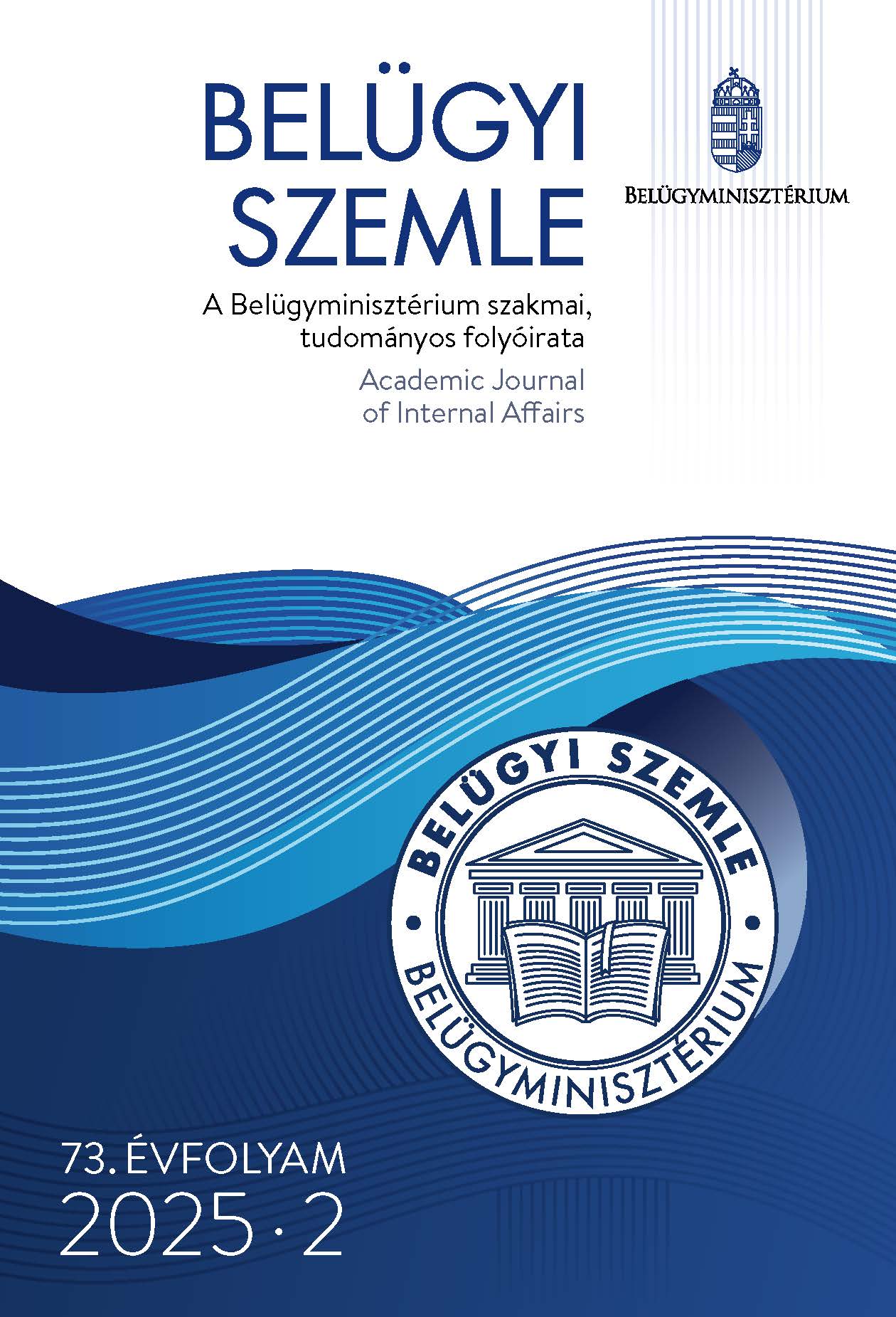Absztrakt
A korrupció elleni eredményes küzdelem napjaink egyik legégetőbb kihívása, különösen az államigazgatás területén. Magyarország kormánya több évtizede elkötelezett a korrupció minden formájának visszaszorítása, az EU pénzügyi érdekeinek védelme és az uniós költségvetési források szabályszerű felhasználása mellett. Ennek jelenleg irányadó alapdokumentuma a kondicionalitási eljárás, valamint a helyreállítási és rezilienciaépítési terv keretében elkészült 2023. július 1. és 2025. december 31. közötti időszakra vonatkozó Nemzeti Korrupcióellenes Stratégia (NKS), melynek keretein belül sor került az államigazgatási szervek teljes állománya tekintetében az álláshelyek és munkakörök kockázatalapú értékelésére. A korábbiakhoz hasonlóan ez adja az alapot az elemzések elkészítéséhez, amelyek megadják a különböző álláshelyek/munkakörök korrupciós kitettségét.
Cél: A kutatásoknak a ténymegállapításokat és javaslatokat megfogalmazó tanulmányokon túli, kézzel fogható eredményterméke legyen, amivel egy olyan innovatív eszköz kerülhet a közigazgatási vezetők kezébe, amely tényleges segítséget jelent a korrupciós kockázatok figyelembevételével a korrupciós cselekmények feltárásában, lehetőség szerint még a befejezett cselekmény előtti szakaszban, a kriminalizáció elkerülése érdekében. Ez nem csak egy-egy szerv működését támogatja, hanem a mesterséges intelligencia bevonásával megfelelően hatékony statisztikai és adatelemzési eszközt ad az érintett vezetőknek és az ellenőrzést végzőknek, hogy proaktívan és célzottan léphessenek fel a korrupció ellen, növelve az intézményi átláthatóságot és a közbizalmat.
Módszertan: A feladat végrehajtásának legcélravezetőbb módjaként egy technológia tervezését és kifejlesztését céloztuk meg és kezdtük el, ami egy innovatív korrupcióazonosító rendszert eredményez olyan algoritmussal, amelynek metodikái korrupciós mintákat, anomáliákat keres az eljárásokban, az eljárások és azok dokumentumainak tartalmát vizsgálja mesterséges intelligenciával is, és képes azonosítani, ellenőrizni, kiszűrni korrupciótípusonként a potenciálisan gyanús cselekményeket, valamint automatikusan kiadja a vizsgálatra javasolt eseményeket.
A rendszer működési elve egy adatbázisrendszerű hálózati szoftver, folyamatvezérelt felhasználói architektúrával. Főbb funkciói közé tartoznak a diszkrecionális jogkörön alapuló döntések anomáliáinak feltárása, valamint a különböző típusú gazdasági korrupciós cselekmények detektálása, a vizsgálatok indítása és lezárása, továbbá az eredménykimutatás, ami az előrejelzéseket és kialakuló tendenciákat kimutató statisztikai modellek generálásából, valamint a státusszal („priusz”) ellátott nyilvántartás biztosításából áll.
Megállapítások: A rendszer által azonosított események vizsgálatára már az eljárás közben is lehetőség van, így a folyamat időben korrigálható, csökkentve a befejezett korrupciós cselekmények számát. A rendszer bemeneti pontjai közé tartoznak az álláshely- és munkaköralapú kockázatelemzés eredményei, az eseményekben érintett szervezetek, pályázók, beszállítók, támogatottak és döntéshozók adatai, azok nyilvántartásban való érintettsége, valamint az eseményhez tartozó adatok és a kapcsolódó dokumentumok is.
Korunk kihívásainak megfelelően a mesterséges intelligencia bevonásával történik a statisztikai alapú tendenciaazonosítás, mely előrejelző rendszerként funkcionál, így támogatja az ellenőrzés egyik nehezebb részének a prevenciós intézkedésekhez szükséges döntések meghozatalát, jelentősen segítve az adott szerv vezetőjének és az ellenőrző személyeknek, szerveknek a munkáját.
Érték: Az eljárás a gazdasági tevékenységeken és eseményeken túl kiterjeszthető a korrupciós kockázatok más formáira is, mint például a nepotizmus, vagy a diszkrecionális jogkörön alapuló döntések vizsgálata. Országos kiterjesztés esetén megnyílik a lehetőség a különböző ágazatok és intézmények ilyen jellegű összehasonlítására, a szükséges beavatkozási pontok felmérésére. Mindezzel a jogi szabályozáson és korlátozáson túl az emberi tényező is jobban górcső alá vehető. Elemzés készíthető a vizsgált területeken arról is, hogy a korrupciós jelenség a bevezetett innováció nyomán hogyan változik, és annak milyen kimutatható hatása van az állami kiadások módosulására.
Ezzel egy újabb hatékony eszköz kerülhet a Kormány kezébe annak bizonyítására, hogy elkötelezett a korrupció jelentős csökkentése mellett, amely nemzetközi szinten is elismerést hozhat.
Hivatkozások
European Commission. (2016). Arachne: Risk-scoring tool for EU-funded projects. https://op.europa.eu
László E. (2014). Korrupciós kockázatok a közszektorban, különös tekintettel a rendészeti (rendőri) igazgatás területére. Belügyi Szemle, 62(10), 59–98. https://doi.org/10.38146/bsz-ajia.2014.v62.i10.pp59-98
Tapscott, D. & Tapscott, A. (2016). Blockchain revolution: How the technology behind Bitcoin is changing money, business, and the world. Portfolio/Penguin.
World Bank. (2023). Governance risk assessment system (GRAS). https://govtransparency.eu

This work is licensed under a Creative Commons Attribution-NonCommercial-NoDerivatives 4.0 International License.
Copyright (c) 2025 Belügyi Szemle
